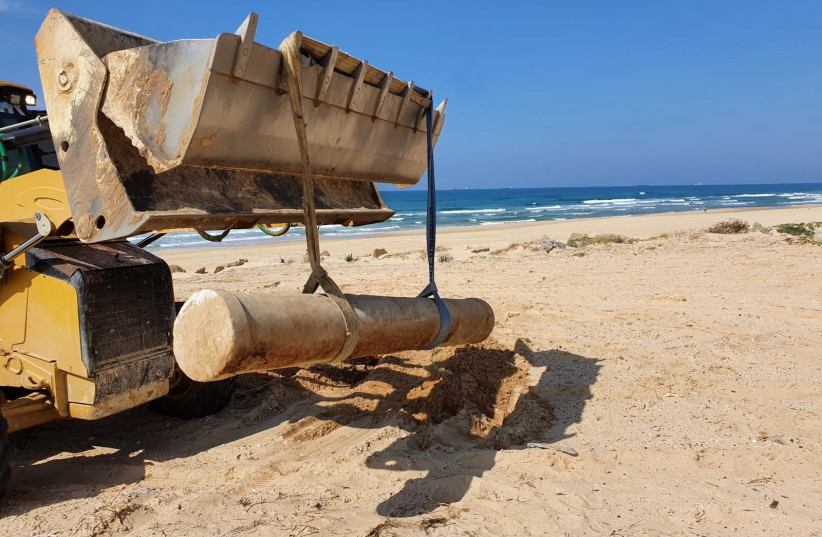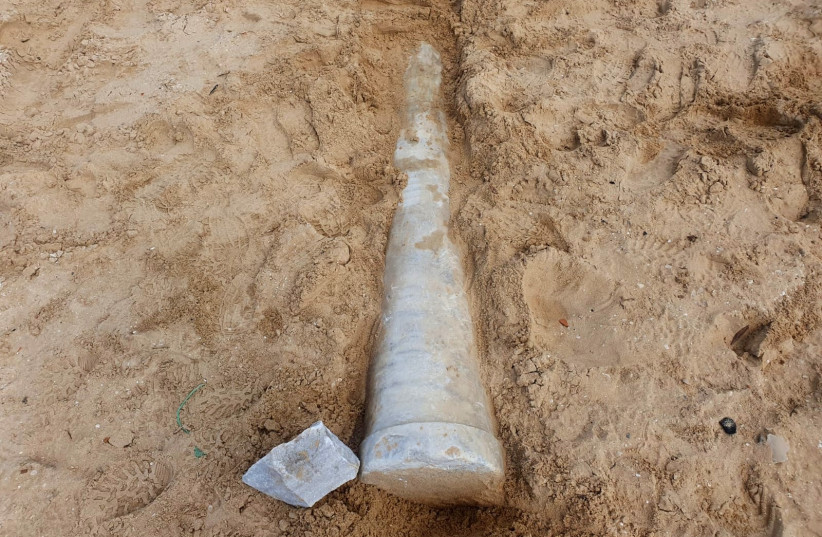Two policemen on routine patrol in Ashdod’s sand dunes last week uncovered an impressive 1,500-year-old marble pillar that was uncovered by recent rains.
The pillar is part of the remains of a large Byzantine church that was located in the area some 1,500 years ago, according to the Antiquities Authority (IAA).
“Finding a complete pillar in this condition is a very rare find, especially on the beach where people are walking by every day,” Ashdod subdistrict archaeologist Avi Levy said. “It is not something you find every day.”
The pillar, which was found lying in the sand, measured about 1.6 meters and, amazingly, was found in one whole, unbroken piece, he said.
“This find is very important because it gives us a rare peek through the window of that period, and the wholeness of the pillar is impressive,” he added.

The marble from which the pillar was made is not from Israel, and it needs to be analyzed by IAA experts to pinpoint its origin, Levy said.
Ashdod police officers Itai Dabush and Sagiv Ben Gigi were on their routine patrol at the beach when they ran across something jutting up from the ground north of the Ashdod-Yam Fortress. They called Shlomit Katan, a manager at the municipal hotline, and inspectors from the IAA were called in to inspect the object.
“The column appears to have been uncovered following recent rains in the area,” IAA Director-General Eli Escozido said. “Any such discovery adds another piece to understanding the cultural puzzle of Israel in ancient times.” He praised the vigilance of the police and the director of the municipal hotline.

Archaeological excavations have been conducted in Ashdod since 2013 under the direction of Dr. Alex Pantalkin of the Department of Archeology and Ancient Near Eastern Cultures of Tel Aviv University. Extensive remains of a Byzantine period church compound were uncovered in August 2017 in the northern part of the site.
One of the fascinating finds in the excavation was a series of tombs bearing memorial inscriptions for male and female deacons, assistants of the priest. The tombs were found next to each other in the north citadel area of the church. A tomb of a female martyr was also discovered in the central apse of the church.
Ashdod-Yam, located in the southern coastal area of the modern city of Ashdod, covered an expansive area and was one of the most important coastal cities in the Byzantine period. It was known as Azotos Paralios.
The city included the very impressive church as well as a fortress, other public buildings and a pillared main road, Levy said. It was a busy port city used for maritime trade of raw material, food and other supplies, he said.
The famous Madaba Mosaic Map discovered in an early Byzantine church in Madaba, Jordan, depicts the city with its pillared road, public buildings and churches, Levy said.
“The pillar could have been from the street... or it is not inconceivable that [it] belonged to an ancient church depicted on the map of Madaba,” he said.
